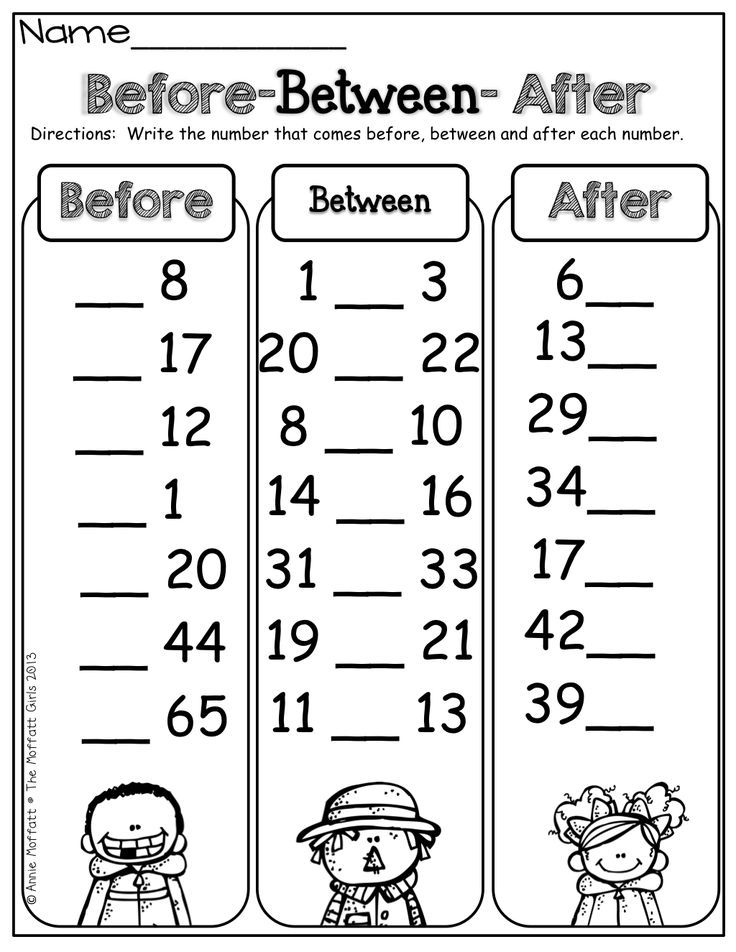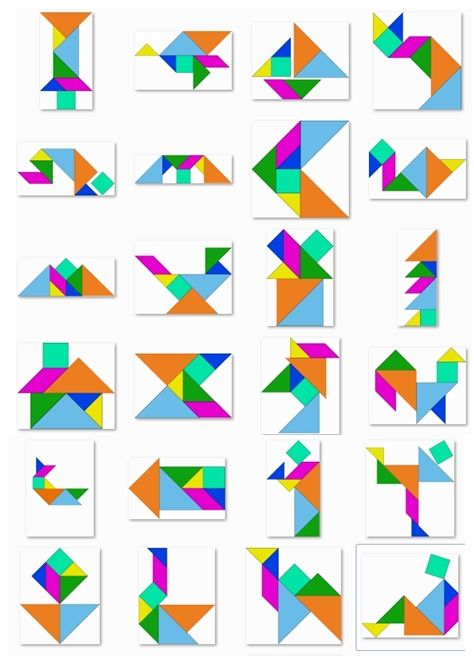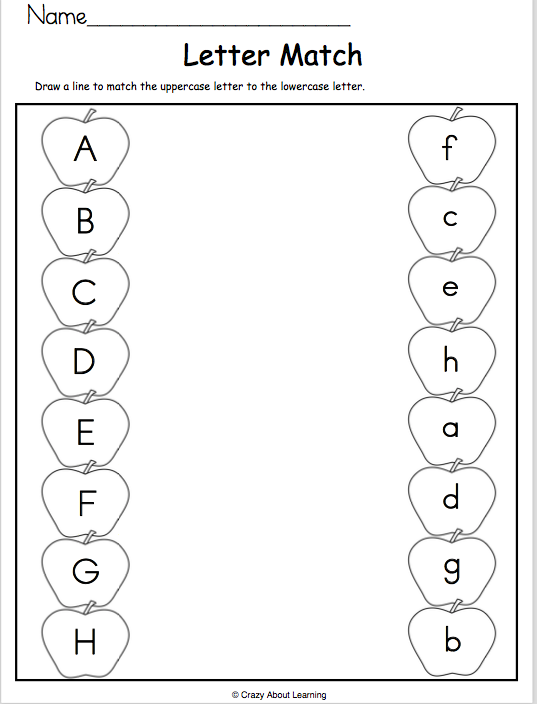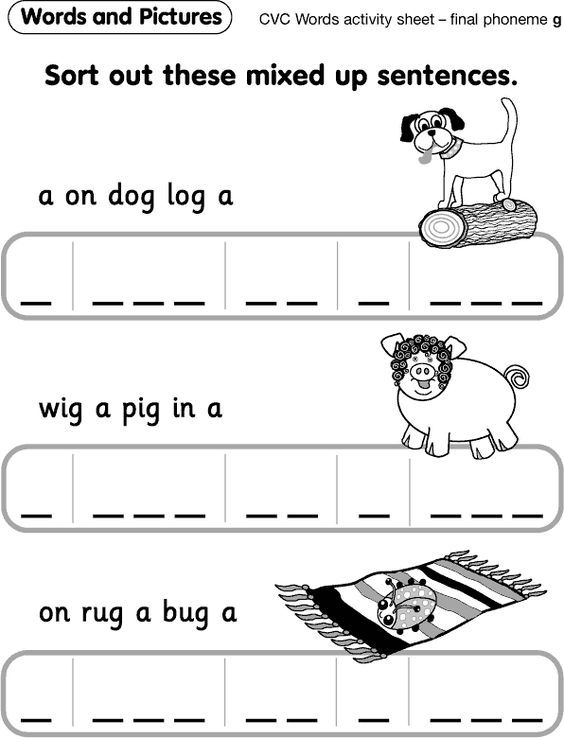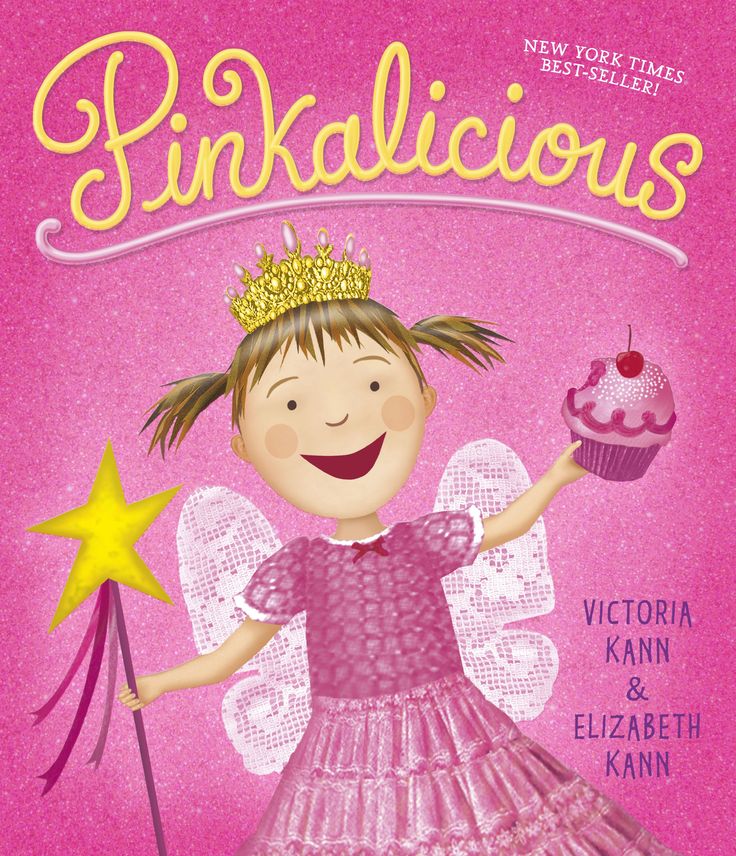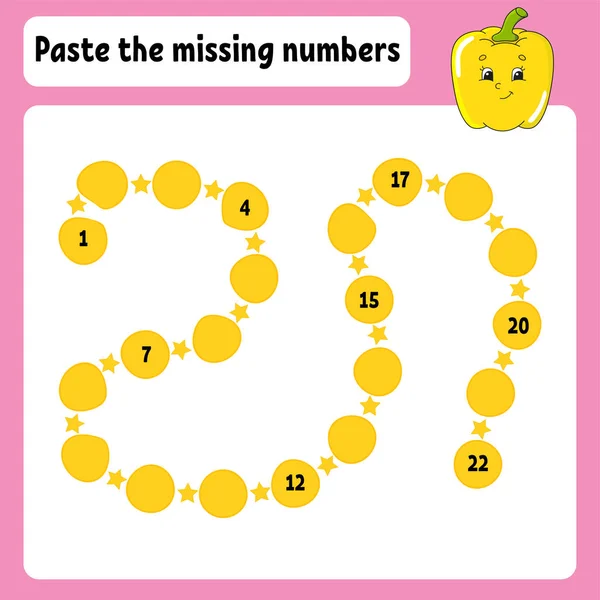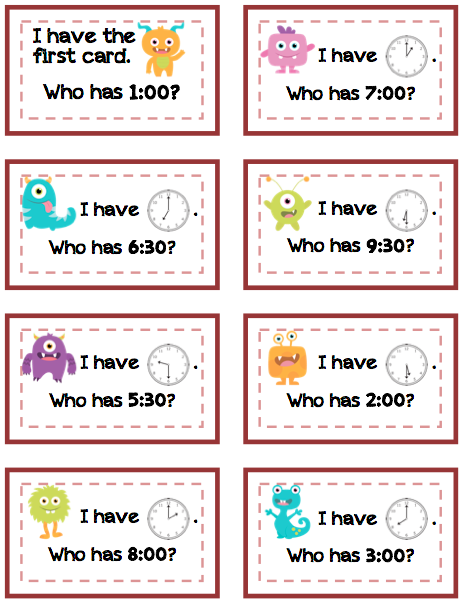Math topics for kindergarten
The 4 Major Math Concepts Your Kids Learn in PreK & Kindergarten
There are so many different topics our children learn throughout the year, just keeping up with each night’s new piece of homework and its latest ideas can feel very overwhelming. As parents, we don’t get to see the major idea behind the “everyday” work and it can be frustrating to understand where each skill is going. In this first blog post of a continuing series, I will be highlighting the major math concepts that are taught at the different grade levels so we, as parents, can help to build and support these ideas at home.
Here are the four major math concepts taught in pre-kindergarten and kindergarten, along with exercises you can practice with your children to help reinforce their learning.
1. Counting. Students are beginning their experience with numbers through counting, number names and written numerals. Students are learning to count objects and understand a one-to-one correspondence. They are also starting to compare different sets of objects and use appropriate language.
Encourage your child to:
- Touch different objects and count out loud.
- Move objects from one group to another.
- Count a set of objects and “see” or “write” that corresponding number.
- Start to use comparing words: more than, less than, the same as.
2. Addition & Subtraction. This is the very early stage of adding and subtracting. The focus should be on developing an understanding of addition as “putting together and adding to,” and subtracting as “taking apart and taking from.” Students do not need to write equations at this young an age, but are encouraged to begin using them.
Encourage your child to:
- Tell stories about adding and subtracting. For example, for addition: Two bunnies sat on the grass. Three more bunnies hopped there. How many bunnies are on the grass now? For subtraction: Five apples were on the table.
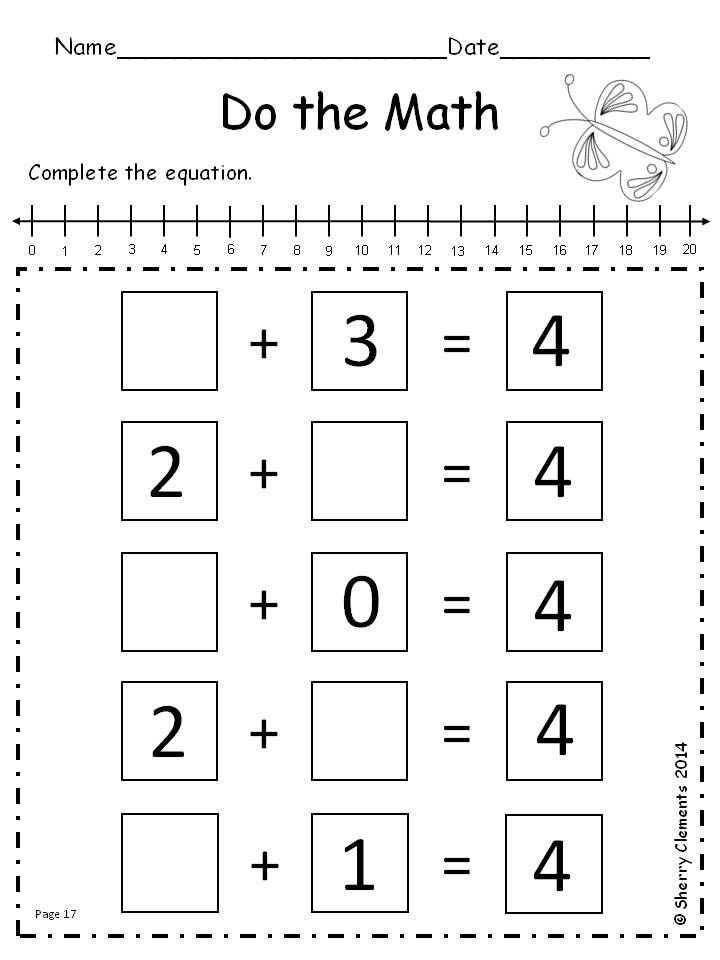 I ate two apples. How many apples are on the table now? Draw pictures about putting together and taking apart.
I ate two apples. How many apples are on the table now? Draw pictures about putting together and taking apart. - Count to 10 and break apart numbers (decompose – math’s fancy word for “breaking apart”) into different combinations. For example, 5 can be seen as:
Image Credit: http://kindercraze.com
3. Measurement & Data. Young children are beginning to describe and compare their physical world. They are starting to classify, sort and group objects into categories.
Encourage your children to:
- Compare two different objects using appropriate language. For example:
“John is taller than Sarah.”
“This tree is shorter than that tree.”
“My bag is heavier than your bag.” - Sort objects by color, size, material, etc.
- Describe their physical world with directional words: in front of, behind, on top of, next to, below, etc.
4. Geometry. Students are starting to look at and compare two-dimensional (flat) and three-dimensional (solid) shapes.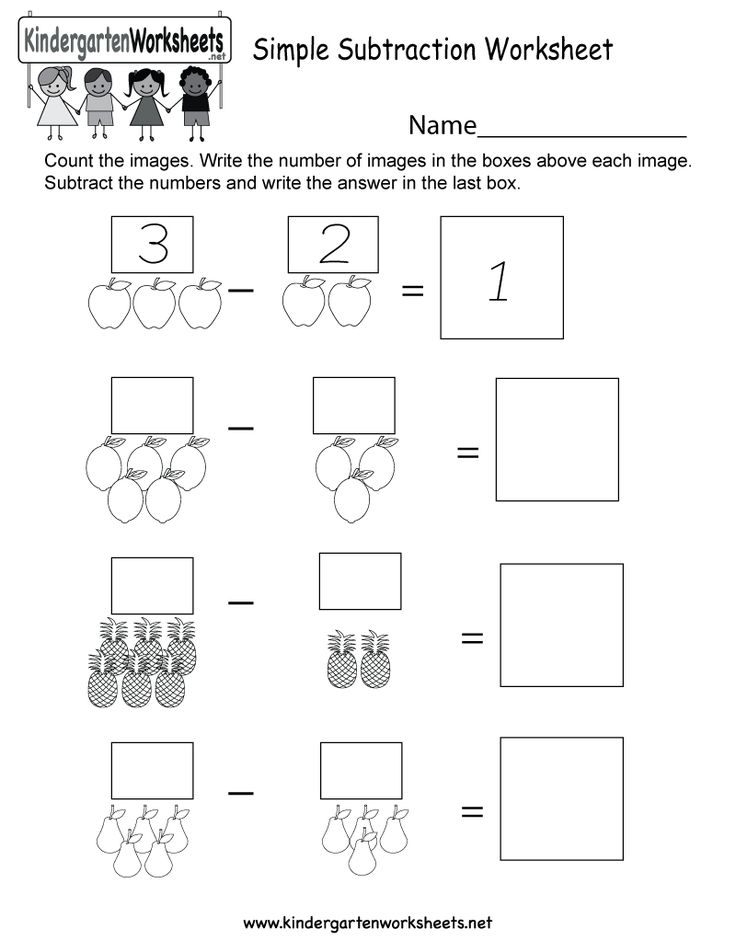 They are using appropriate language to recognize different shapes and talk about their attributes.
They are using appropriate language to recognize different shapes and talk about their attributes.
Encourage your child to:
- Find 2-D shapes in the world: squares, circles, triangles, rectangles, and hexagons.
- Find 3-D shapes in the world: cubes, cones, cylinders, and spheres.
- Count the different number of sides, vertices, angles, etc.Model different shapes using clay, sticks, pipe-cleaners, etc.
See all blog posts in this series for information on what your child will learn in math class from preschool all the up through 8th grade.
7 Kindergarten Math Activities To Make Learning Fun
Young children are often eager to learn new skills and concepts. That’s why introducing kindergarten math activities can be so effective.
One thing to always remember, though, is to make learning at home fun and engaging because children learn best through play. And, luckily for you, our experts at HOMER know a thing or two about that!
This article will give you a detailed guideline to help your child get a solid mathematical foundation.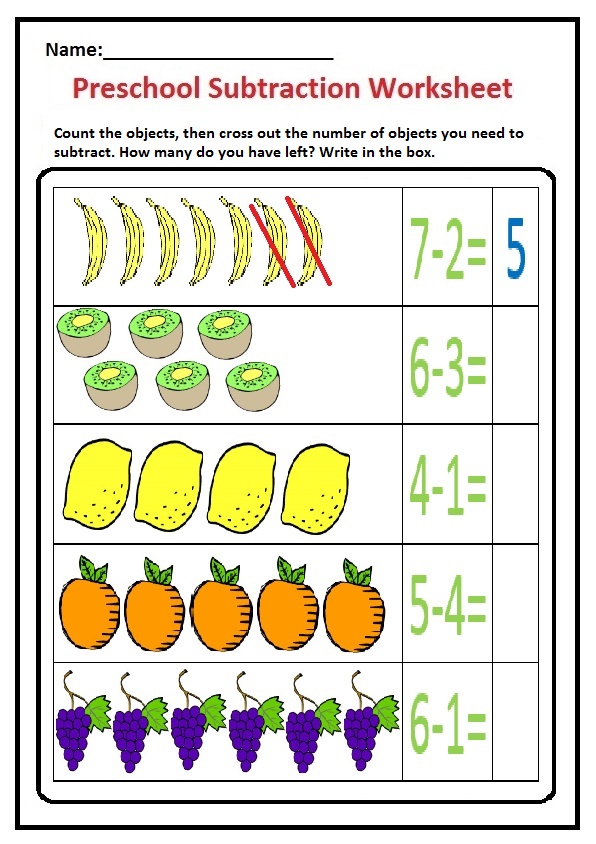 These easy at-home activities are fun, engaging, and offer lots of learning opportunities.
These easy at-home activities are fun, engaging, and offer lots of learning opportunities.
Without further ado, let’s get started.
Kindergarten Math Concepts
Before we dive in, it’s important to understand which concepts your young learner will be tackling in kindergarten. That way, it’s easier to know which activities and math skills to focus on at home.
The following are the key math principles your child may know by the end of their kindergarten year:
- Counting and cardinality
- Recognizing numbers beyond 10
- Adding and subtracting single-digit numbers
- Recognizing shapes
- Classifying objects by size
With the principles above in mind, we’ve compiled a list of activities that will help your child develop these essential skills.
7 Fun Kindergarten Math Activities
1) Shape Hunt
What You’ll Need:
- Notebook
- Crayons
What To Do:
Start by selecting any two objects around your house that look different but have the same shape.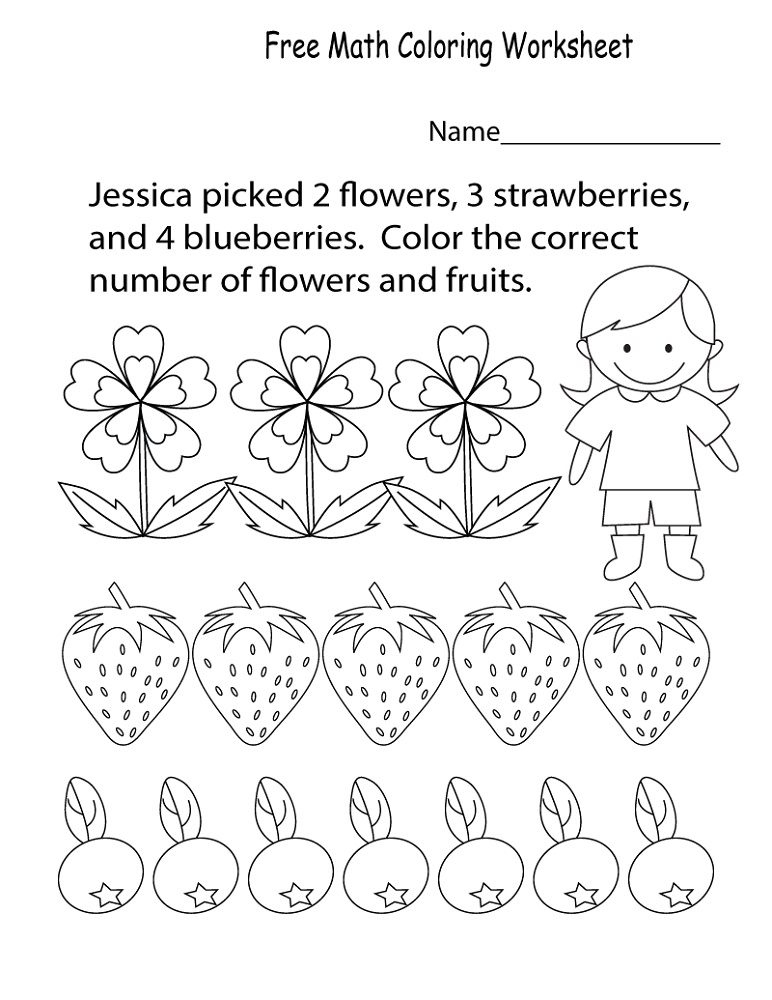 Then, give your child clues about one of the objects. For example, you might say, “It has a round shape.”
Then, give your child clues about one of the objects. For example, you might say, “It has a round shape.”
Your child will need to act as a detective and solve this shape mystery! When they are confident that they know what this object is, encourage them to take their detective notebook and draw the item.
Repeat this process for the second object.
Once your little detective has found and drawn the two objects, you can evaluate them and discuss other items with the same shape. So, for something that’s round, this can be plates, pizza, door handles, and so on.
Once you’re confident they understand the properties of the shape, you can play the game again with another shape (triangle, square, etc.).
You don’t have to limit yourselves to your indoor space. You can also head outside and search for many interesting shapes in your garden, local park, or neighborhood if you’d like.
Find out more about this interesting game from our blog.
2) Count The Beans
What You’ll Need:
- Spoon
- Dried kidney beans
What To Do:
For this fun activity, you will need to take a spoon and hold it outstretched.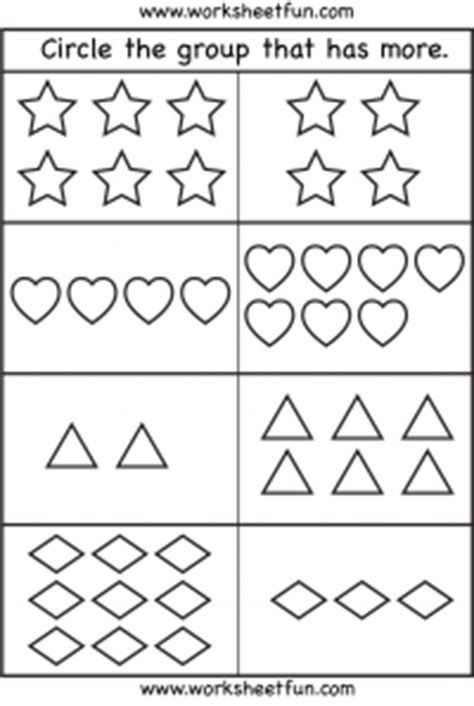 Your child will then proceed to put one dried kidney bean at a time onto the spoon.
Your child will then proceed to put one dried kidney bean at a time onto the spoon.
When the first one falls off, you then count how many beans you managed to get on the spoon.
You can play this game with a larger spoon as well. For this, the numbers will get higher, so your child will need to be familiar with higher numbers before they’re ready for this one.
To help, a simple 10 frame should do the trick (a 10 frame is basically a rectangle with 10 equal spaces (five on top and five on the bottom).
If, when counting the beans, you end up with more than 10, you can put each set of 10 in a small paper cup, allocate the cups to each frame, and then add everything for the final tally.
This activity helps kindergarteners continue practicing their counting and gain an understanding of number sense.
3) Building Sets With Blocks
What You’ll Need:
- Building blocks
What To Do:
This activity requires you to ask your young learner to build a color tower with a specific number of blocks.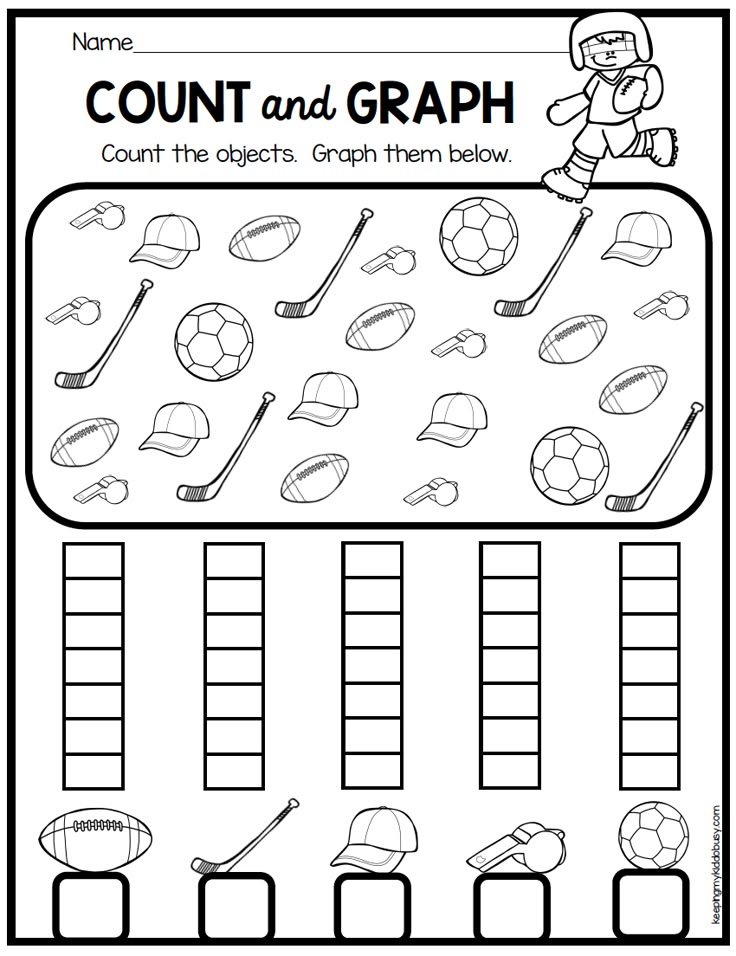 For example, “Build a blue tower with 10 blocks, a red tower with eight blocks, and a yellow tower with eleven blocks.”
For example, “Build a blue tower with 10 blocks, a red tower with eight blocks, and a yellow tower with eleven blocks.”
All this information will need to be remembered by your child, so this can be a great way to help build memory. Children will also continue practicing colors and counting skills with this activity.
4) Number Guessing
What You’ll Need:
Magnetic numbers (0 – 9)
What To Do:
For this activity, your child will need to put their hands behind their back. You will then place one of the magnetic numbers in their hands for them to feel. Can they guess the number?
If this is a little challenging at first, it can help to have another set of magnetic numbers that they can see as they feel.
This is a great sensory activity that can help familiarize children with each number’s interesting shape and unique qualities.
5) Shape Hopscotch
What You’ll Need:
- Different colored paper
- Scissors
- Painter’s tape
What To Do:
Hopscotch is one of our favorite games here at HOMER.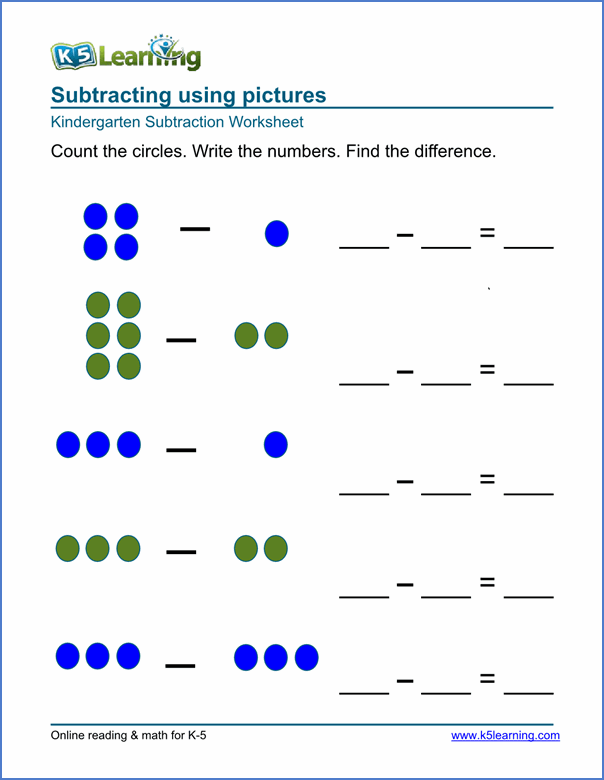 If you’re looking to play the traditional game, you can check out this link, which includes other fun math-related activities in addition to Hopscotch.
If you’re looking to play the traditional game, you can check out this link, which includes other fun math-related activities in addition to Hopscotch.
For this article, we decided to switch things up a bit with shape hopscotch. All you need to do is cut out six different (but easily recognizable) shapes and give each shape its own color (for example, red circles, yellow triangles, blue squares, purple stars, etc.).
Once you have your shapes, tape them to the floor with painter’s tape. While taping, ensure that the spacing works for your child (the shapes aren’t too far apart).
You can encourage your child to jump, hop, or wiggle through the shapes. Here are a few ways they can make it through their shape maze:
- Call out colors or shapes for your child to race and find
- Have them hop from one side to the other side by only touching one shape or color
- Give them directions as they go, and ask what they’ve landed on. For example, “Jump three shapes to the left, one shape up, and two shapes right.
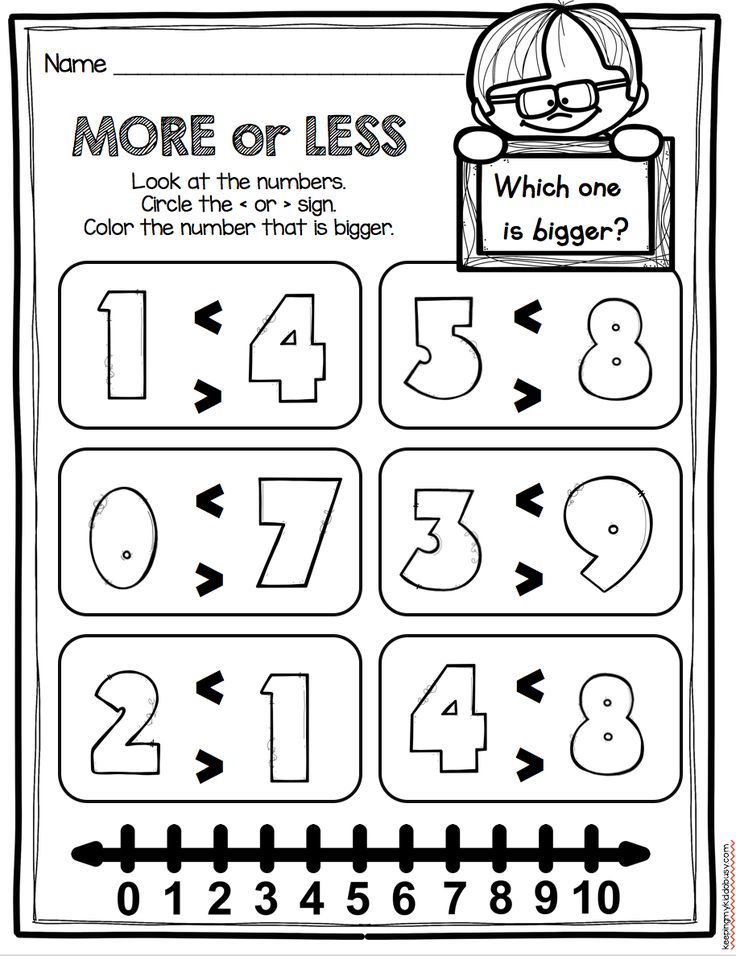 What color and shape are you on?”
What color and shape are you on?”
This is an excellent and fun way for kids to continue working on their gross motor skills while incorporating shape and color recognition. Children will also work on the important skill of following directions.
6) Make A Number Line
What You’ll Need:
- Chalk
- Paved area outside
- Deck of cards
What To Do:
On your paved area outside, draw a large number line with chalk. You can write numbers up to 10, 20, or even 30 as your child becomes familiar with those numbers.
Next, take five red playing cards (numbers 1 – 5) and five black playing cards (numbers 1 – 5). Then, you each get a token which you’ll place in the middle of the number line. Mix the cards and put them face down.
Next, take turns picking cards. A red card means you go up the number line based on the card’s value (for example, if you pull a red five of hearts, you move up five spaces). A black card, on the other hand, means you go down on the number line (red four of clubs = down four spaces).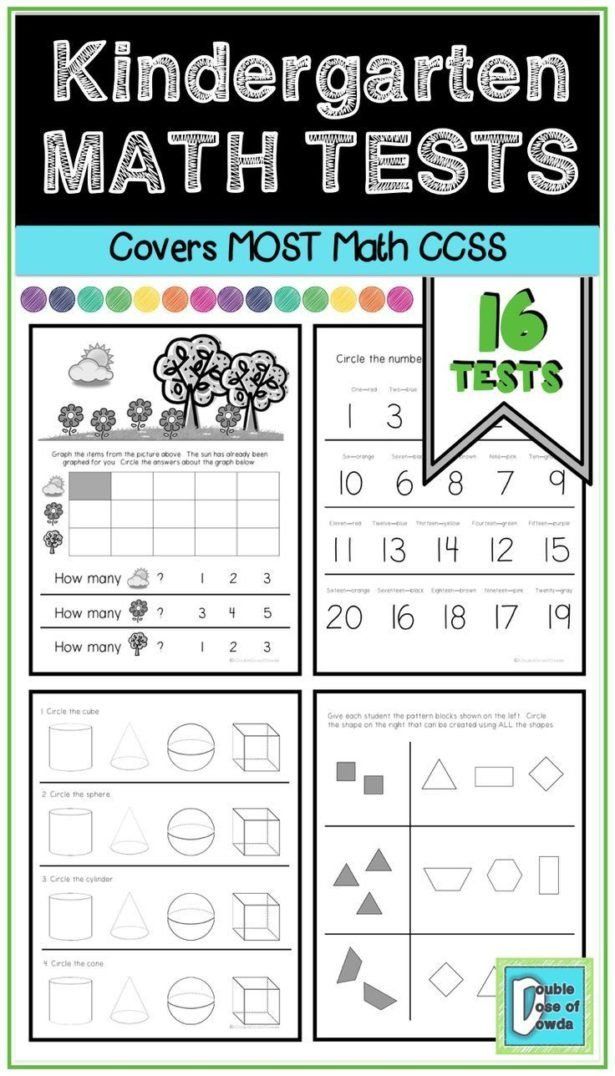
If you end up below the number one or above the top number on the line, you’ll stay put until all players have had their turn.
After each player has picked four cards, whoever is highest on the number line wins!
7) Snowball Battle
What You’ll Need:
- Paper
- 3 small buckets
What To Do:
Crumble your paper to make “snowballs.” Then, place your buckets at the end of the room. Challenge your child to toss the snowballs into any of the buckets until they reach a target number (e.g., 10).
If you have multiple kids, this can turn into some friendly competition with a timer. How many can you land in five minutes?
You can also vary the game a bit for older kids by having them toss all 10 snowballs into the three buckets and then write down how they got to 10 (for example, with 3 balls in one bucket, 4 balls in the next, and 3 balls in the last). How many ways can it be done?
Gross motor and counting skills come into play when engaging in this activity.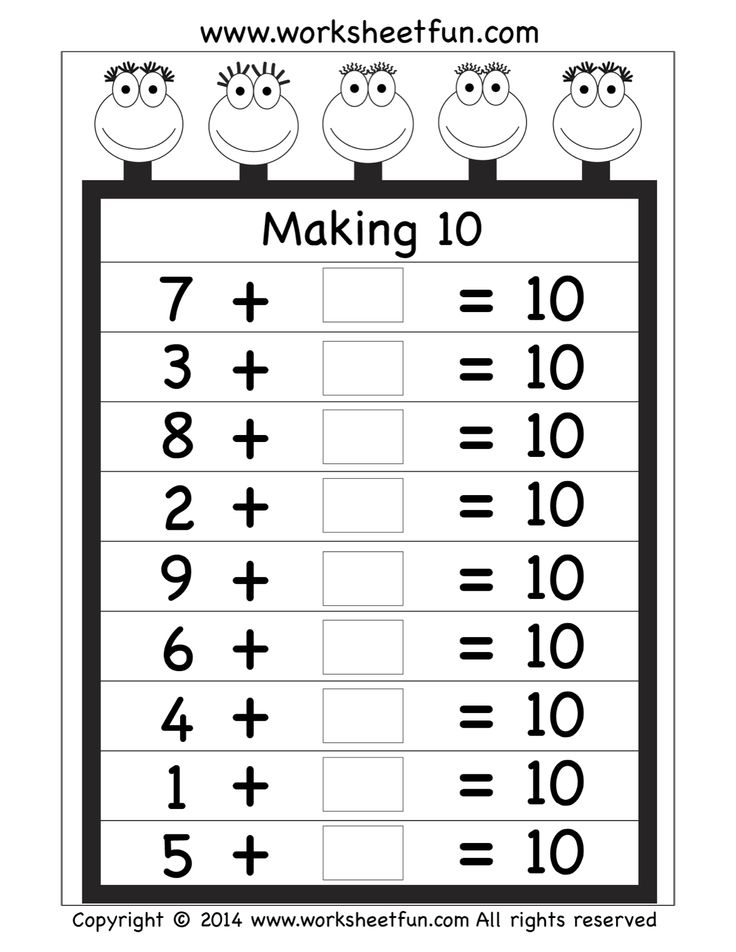
Tips For Helping Kindergarteners With Math
The above activities should help your child practice and understand their math skills. Additionally, here are a few key points to keep in mind.
Incorporate Math Into Everyday Life
Math is all around us! It is in the shapes of objects and buildings, the measurements we take when baking, and the sorting of patterns. This makes it easy to incorporate math into everyday activities.
Remember that the more practice your child gets, the easier it will be to grasp these foundational concepts.
Make It Enjoyable
When something seems too challenging, kids can quickly become overwhelmed and give up before starting. Help your child understand how much fun math is by regularly introducing them to math activities in a fun, relaxed way.
We recommend checking out the HOMER blog to see what other entertaining learning games your child can play to build their math skills.
Practice Positive Reinforcement
Positive feedback is one of the key components for your child to continue having a healthy relationship with mathematics.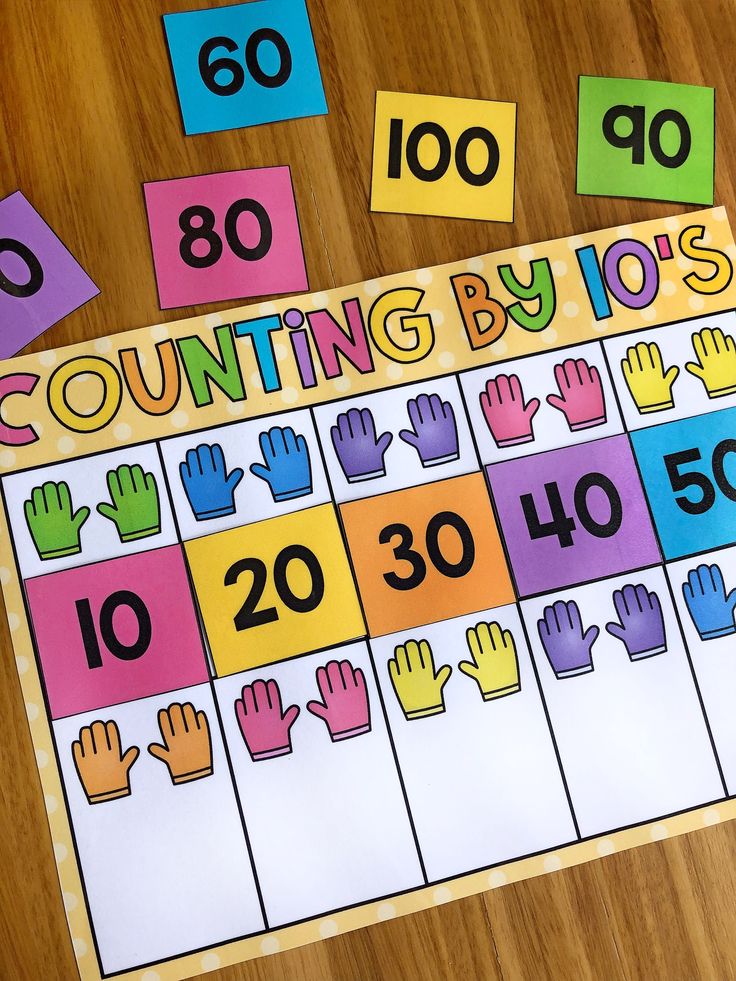 So, when they finally grasp a concept they’ve been struggling with, make a big deal out of it by praising them.
So, when they finally grasp a concept they’ve been struggling with, make a big deal out of it by praising them.
And, if there’s a math skill they haven’t grasped yet, be patient and continue practicing. Soon enough, they’ll get it!
Lay A Solid Foundation With Kindergarten Math Activities
Sometimes children (and adults) view math negatively. You’ll often hear them express how challenging it is. But kindergarten math activities can help build positivity and confidence!
While it can be a challenge, math is still one of the most important subjects children learn and can benefit them for the rest of their lives. That’s why building math skills early on matters.
Engaging in fun, entertaining, and educational kindergarten math activities can help children achieve just that. And our list above offers great ways to practice.
Check out the HOMER Learn & Grow app for even more math activities and to discover how we can help your young learner thrive!
Author
lessons, presentations, class notes, planning, electives, knowledge assessment
Publish and download methodological developments for a preschool kindergarten teacher in mathematics in preschool education.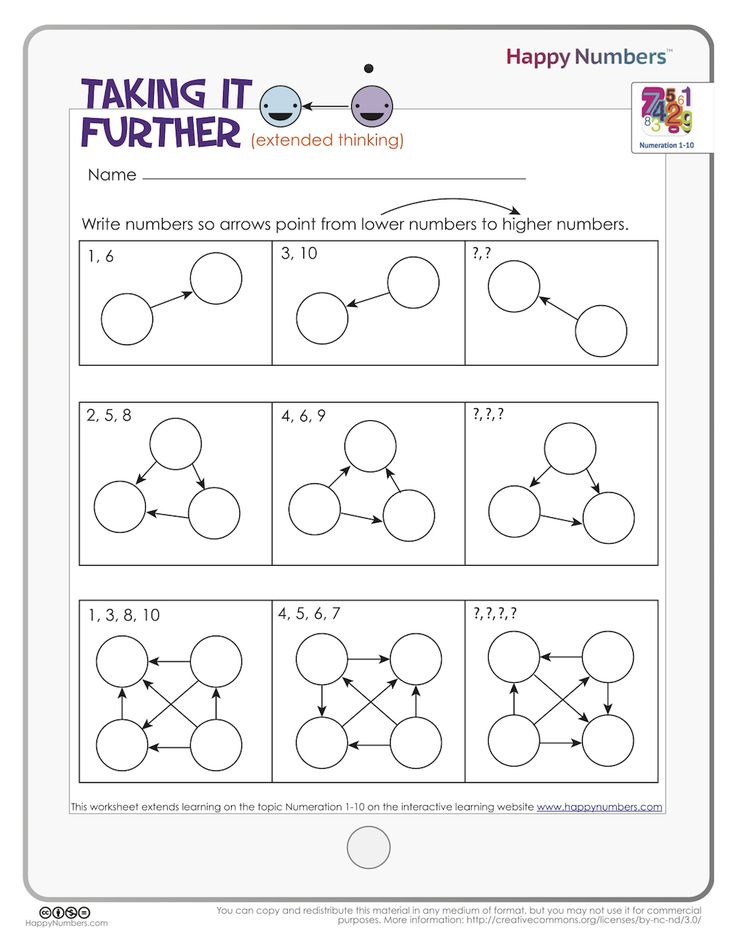 Publication of interesting and necessary materials for a teacher on teaching children mathematics in a preschool educational institution with a free certificate of publication in the media.
Publication of interesting and necessary materials for a teacher on teaching children mathematics in a preschool educational institution with a free certificate of publication in the media.
The section of mathematics in preschool education in kindergarten contains:
- NOD in the senior group
- Development of logical thinking of preschool children
- Kindergarten Mathematics Presentations
- Synopsis of the open GCD in the middle group according to FEMP
- Abstracts of classes in mathematics in kindergarten
- Mathematical leisure
- Lesson in mathematics in the 2nd junior group
- Abstract of a lesson for children with disabilities in mathematics
- Synopsis of GCD for FEMP
- Journey to the Land of Mathematics
- Abstract of the sensory class
- Abstract of the integrated lesson in mathematics
- Lesson on FEMP in the 2nd junior group
- Consultation for the educator
- Summary of the lesson on the formation of FEMP
- Summary of the final lesson on the formation of elementary mathematical representations
- Construct for the formation of mathematical representations
- Graphic dictations in the formation of visual-motor coordination
- Interactive Math Game
- Mathematical game library
- Summary of GCD in mathematics in the middle group using innovative technologies
- Methodical development of a lesson on the development of mathematical and sensory abilities in children
- Technological map of GCD for FEMP in the senior group
- Synopsis of OOD on the development of quantitative representations in children
- The development of mathematical abilities in children through play activities in the context of the implementation of the Federal State Educational Standard DO
The development of speech, logic and mathematics can be carried out in a playful way and perceived by the baby as a fun pastime.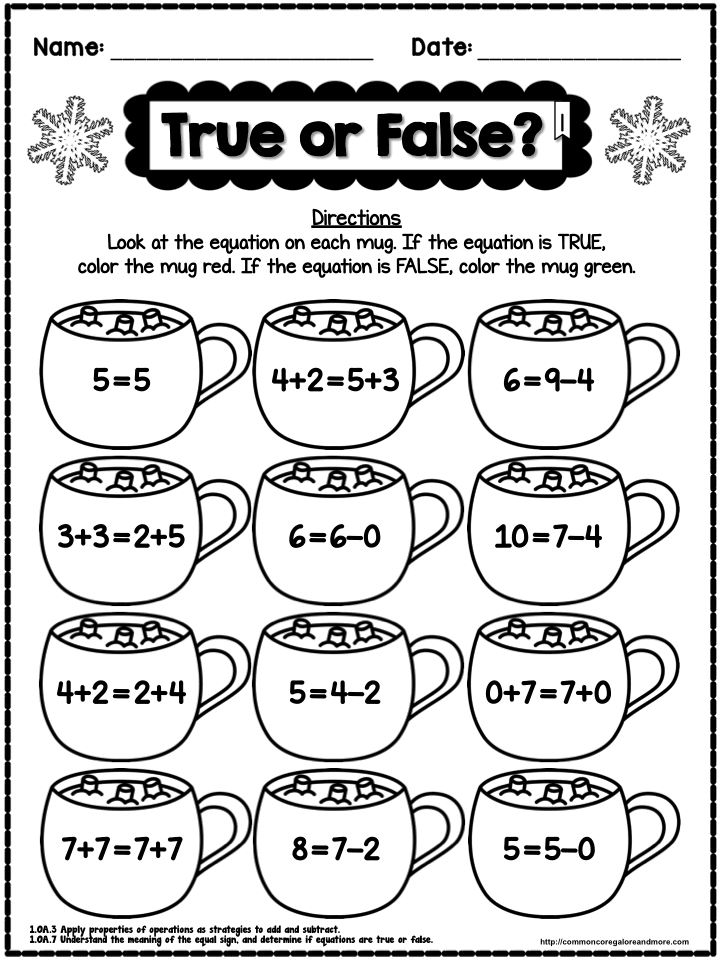
Mathematics in kindergarten begins in the second junior group, where they begin to carry out special work on the formation of elementary mathematical representations.
The development of mathematics by preschoolers plays an important role not only in preparing for school life, but also for the formation of logical thinking skills, the development of intelligence and understanding. Mathematics for preschoolers is usually included in the traditional developmental curriculum in kindergarten.
Here you will find lessons, notes, tests, presentations, plans, activities and other useful materials for the work of the teacher and the education of the student.
"Animal House"
Municipal budgetary educational institution MBOU "Secondary School No. 41" Abstract organized educational activities on the development of mathematical representations for the middle group of kindergarten on the theme "Animal house". (Lexical topic .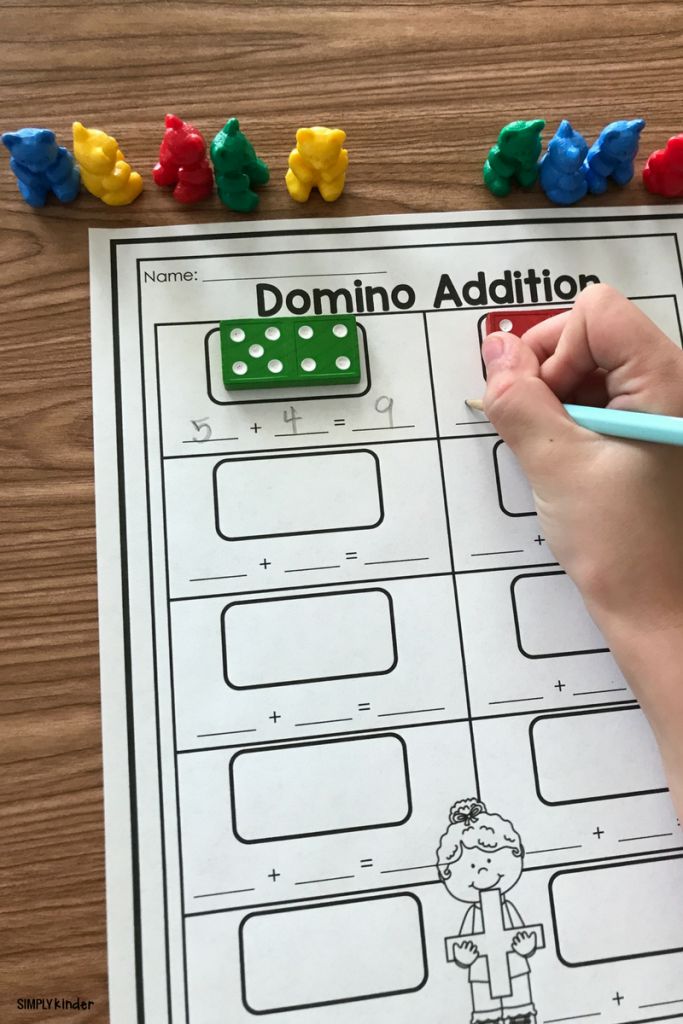 ..
..
11 0 11/11/2022
"Visiting a professor of mathematics"
Summary of the formation of elementary mathematical representations. In preschool senior group. Purpose: fixing the account within 6. Tasks: Educational: fix the score within 6. Be able to recognize geometric shapes. To consolidate the ability to navigate in ...
9 0 11/11/2022
Abstract of a lesson in mathematics in the senior group "Journey to a fairy tale"
In today's modern society, one of the requirements for preschool education is that children receive mathematical knowledge and elementary ideas in kindergarten. preschoolers in the course of their development receive the first elementary ideas in children ...
9 0 11/11/2022
VEGETABLES
Purpose: - to learn to guess a mathematical riddle, to lay out a solution using numbers and signs; introduce the number 7 teach ordinal counting, correctly answer the questions: how much? in which place? teach how to use counting sticks straight .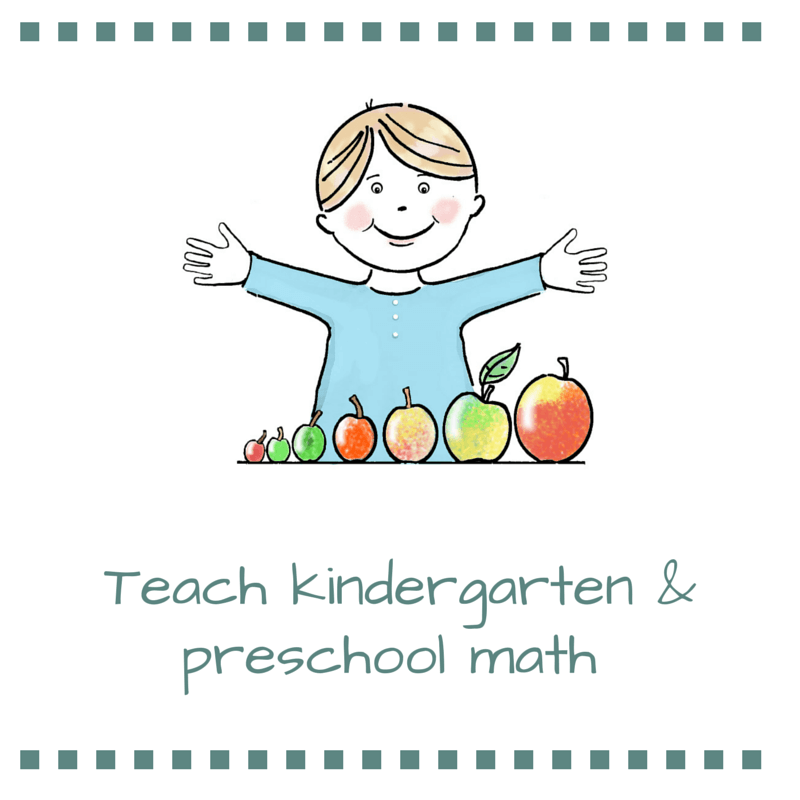 ..
..
5 0 11/11/2022
Didactic manual "Digital table"
Didactic Mathematical Manual "Digital Table" The manual presents didactic games that develop elementary mathematical concepts. Games can be used in organizational lessons and in independent activities of children, from Sun ...
23 0 11/10/2022
Quest - game "We count to five"
Quest - game "We count to five" for children of the middle group Purpose: To reveal the level of mastering the material on the formation of elementary mathematical representations by children of the middle group. Educational tasks: • Learn numbers up to five; • Attach ...
10 0 11/10/2022
Summary of the lesson "Connoisseurs of mathematics"
The purpose of the lesson: to determine the level of knowledge, skills and abilities in the mathematical development of preschoolers. Tasks: Tutorials: - improve the skills of quantitative counting within 10 and knowledge of numbers; - learn to highlight conditions, questions, solutions, about ...
Tasks: Tutorials: - improve the skills of quantitative counting within 10 and knowledge of numbers; - learn to highlight conditions, questions, solutions, about ...
21 0 11/10/2022
Abstract of the integrated lesson on teaching literacy and FEMP "Journey with letters and numbers"
The purpose of the lesson: to consolidate knowledge, skills and abilities in the section "Literacy" and "FEMP", to create a positive mood during the lesson. Tasks. Tutorials: • consolidate the concept of a word, syllable, letter, sound, sentence; • to consolidate the ability to divide words ...
32 0 11/08/2022
"Our fish friends"
Abstract of a lesson for children of primary preschool age using Z. Gyenes blocks Educational tasks: Tutorials: - to consolidate the skills and abilities of operating Gyenesh blocks according to different properties; - continue to develop classification skills.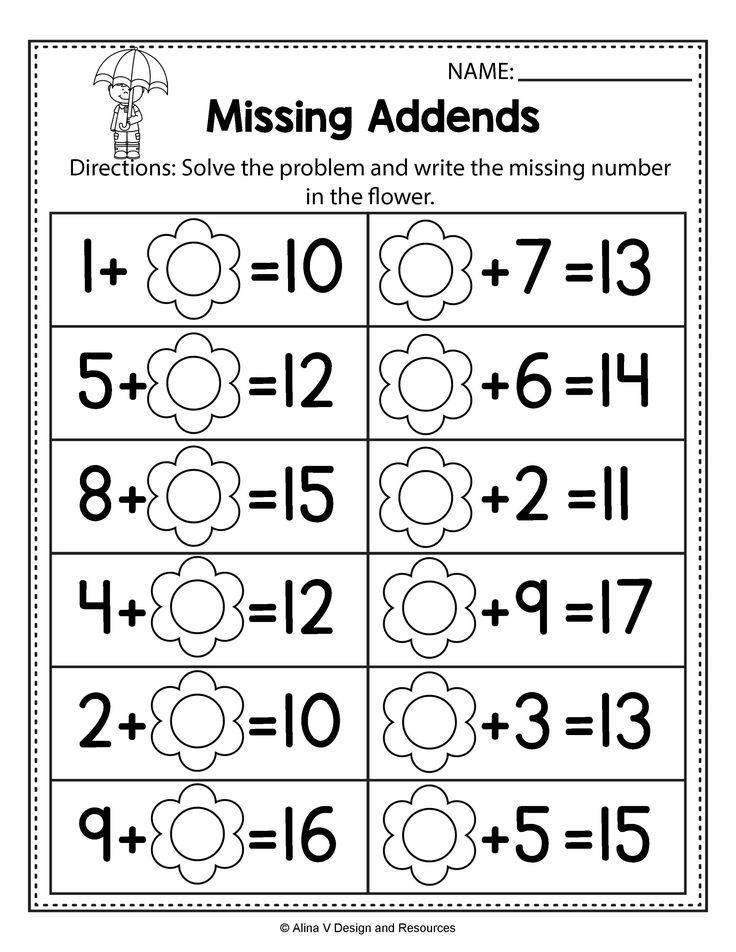 ...
...
17 0 07.11.2022
Synopsis of an open lesson on FEMP in the middle group "Chest for Aibolit"
the formation of elementary mathematical concepts, communication skills, expand children's active vocabulary. Tasks: Educational: 1. To consolidate the ability to count within 5, to introduce the ordinal value of a number, to learn how to correctly answer ...
37 0 07.11.2022
Lesson on FEMP in the senior group of preschool educational institutions. Subject: Volume measurement
to form the idea that it is possible to compare the volume of liquid only when measurements are carried out with one measure; develop practical skills for measuring volume using a conditional measure; continue to learn to select words that are opposite in meaning ...
17 0 07.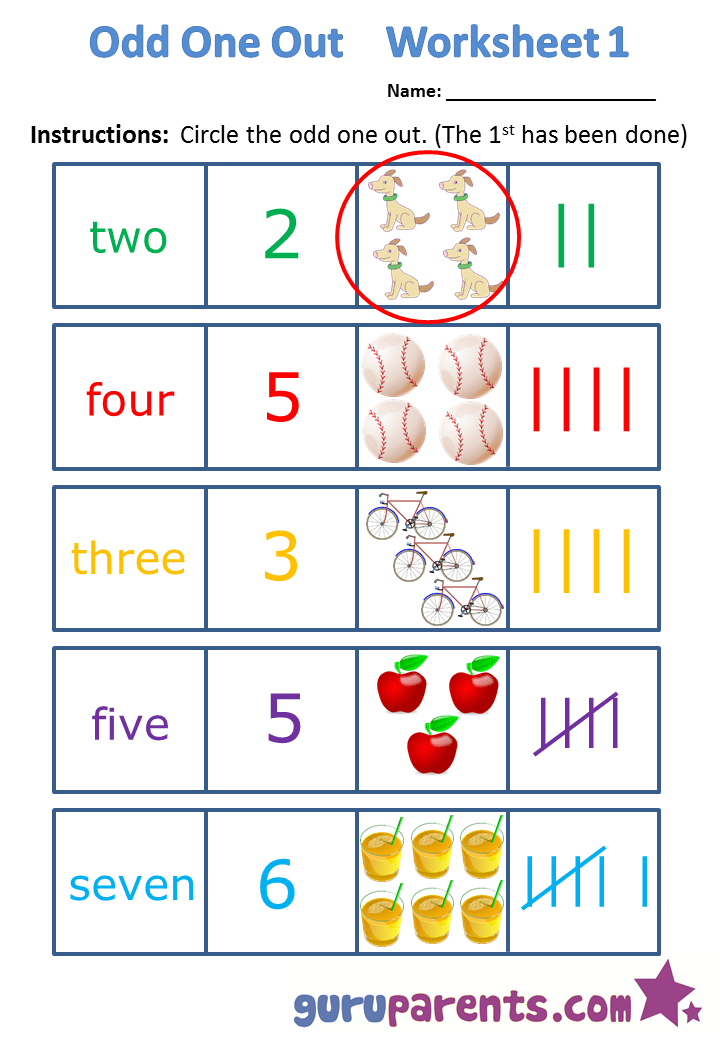 11.2022
11.2022
DEVELOPMENT OF LOGICAL THINKING IN CHILDREN OF OLDER PRESCHOOL AGE THROUGH DIDACTIC GAMES
Thus, the lapbook attracts the attention of children with its design, the content of didactic games that contribute to the development of logical thinking in older preschool children. It can be used by the educator in co-educational during re ...
8 0 07.11.2022
: "Ordinal counting, orientation in space"
Topic: "Ordinal counting, orientation in space" Tasks: 1. Fix the ordinal count of items within the first ten. 2. Learn to navigate in space. 3. Form views: • about the relationship of the whole and the part when dividing ...
14 0 07.11.2022
Synopsis of GCD. FEMP "Big, smaller, small"
Learn to distinguish objects by size: large - small; focus on the size of objects, develop the ability to analyze, compare, carry out consistent actions; develop an interest in learning.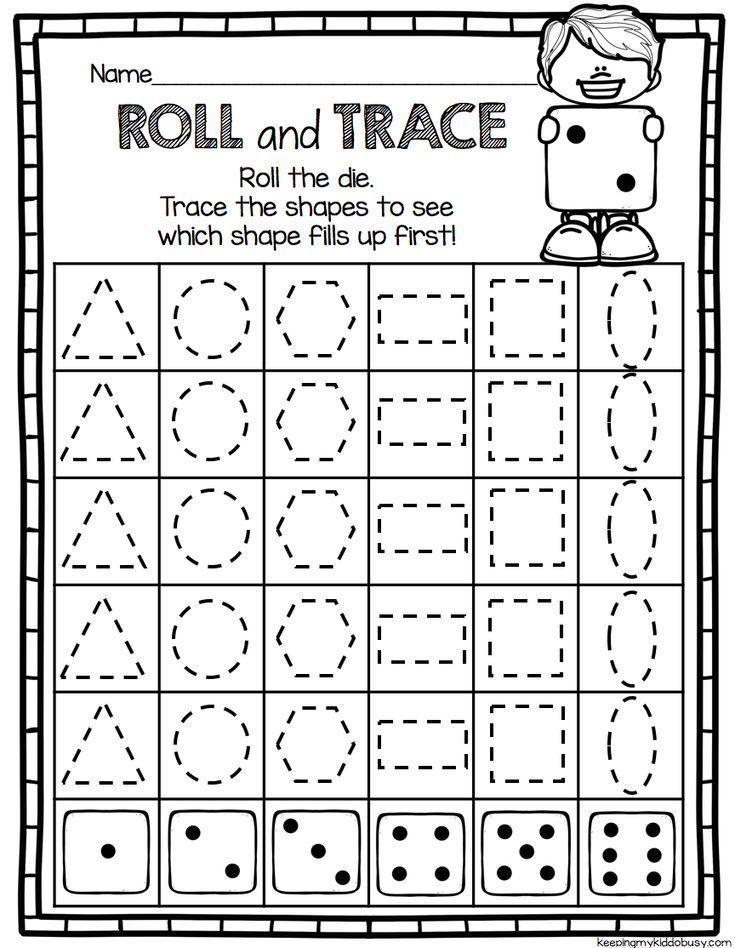
14 0 03.11.2022
Synopsis of GCD on cognitive development (FEMP) in the second junior group
Objectives: To learn to answer the question "how much?" with the words one, many, none. Tasks. Educational tasks - continue to teach children to conduct a dialogue with the teacher: listen and understand the question asked and answer it clearly; - fix and generalize the values ...
20 0 03.11.2022
Methodology "Recognition of geometric shapes"
Purpose: to find out the possibilities of recognizing geometric shapes (circle, square, triangle, rectangle). Circles, squares, triangles, rectangles of different sizes and colors are laid out in front of the child. It is proposed to find a pair for figures of different shapes. ...
26 0 03.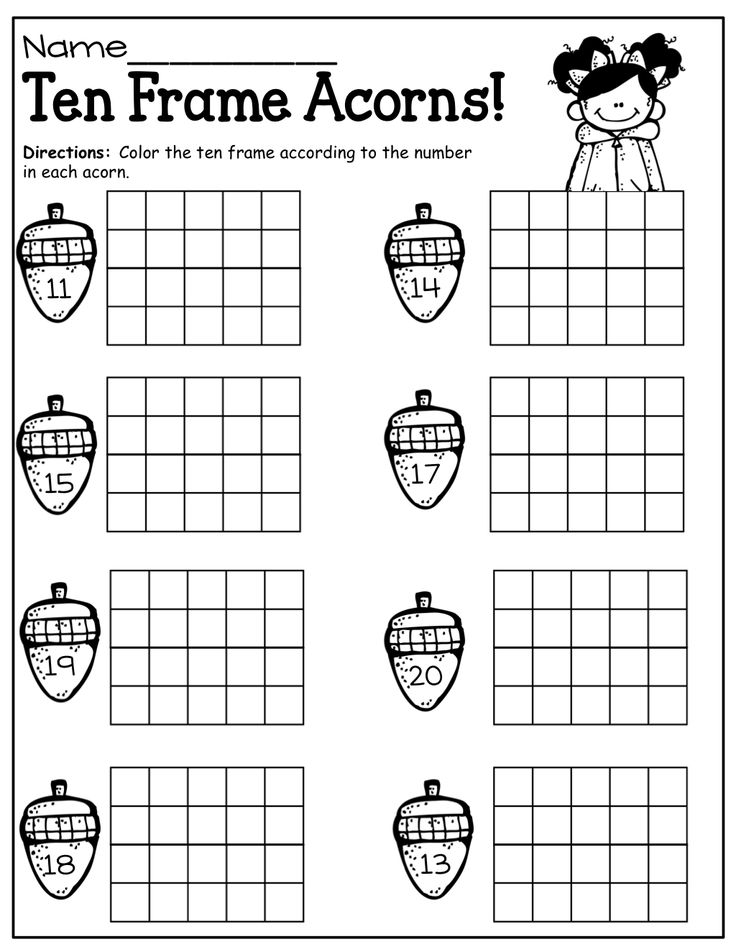 11.2022
11.2022
Diagnostic technique
Purpose: to explore the possibility of carrying out the operation of comparing objects of different lengths, widths, heights. The teacher invites the child to play the game "What is it for?" according to the condition of the game, children must arrange the objects in descending order, name the size of the objects: ...
22 0 03.11.2022
Diagnostic technique "Dogs-bones".
This diagnostic technique allows you to identify the child's ability to use a quantitative account and count objects in accordance with the sample. In the course of this technique, ask the children to count as many carrots as possible so that everything is enough ...
12 0 03.11.2022
Synopsis of GCD on FEMP "The cat's house caught fire" senior age
Abstract for educators of GCD on FEMP for older children.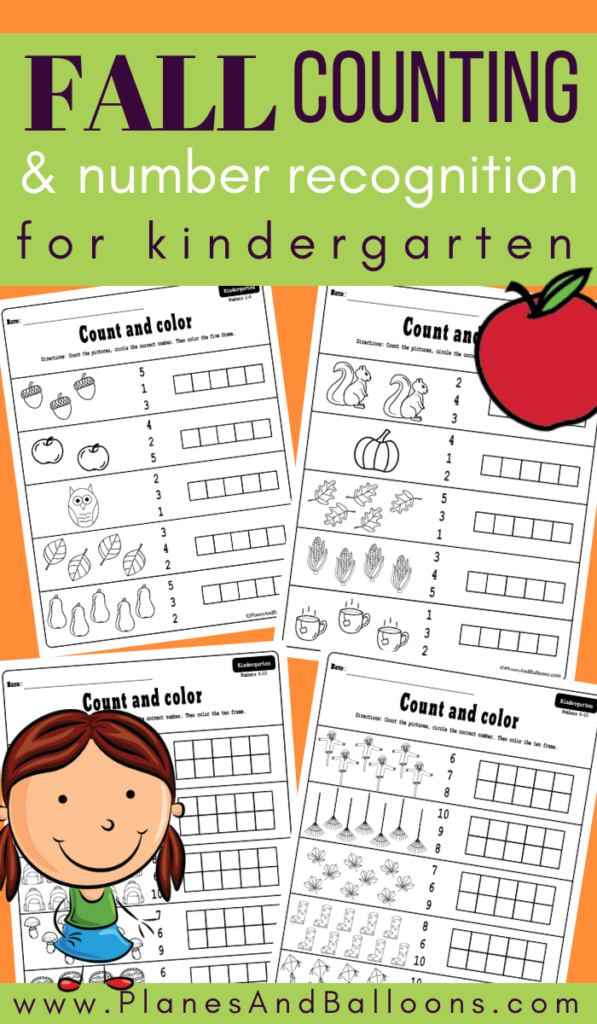 This material can be applied in working with children with disabilities, in particular with severe speech disorders. Purpose: To introduce the method of direct comparison of objects by volume (together ...
This material can be applied in working with children with disabilities, in particular with severe speech disorders. Purpose: To introduce the method of direct comparison of objects by volume (together ...
11 0 11/01/2022
Poultry yard
Continue to teach children to count within 10, answer the question "How much?". Continue to learn how to compose and solve arithmetic problems for addition and subtraction Form ideas about greater than, less than or equal to. Practice distinguishing geometric shapes ...
27 0 10/31/2022
Abstract of a lesson in mathematics in the senior group of kindergarten | Outline of a lesson in mathematics (senior group):
Abstract of a lesson in mathematics in the senior group of kindergarten
Topic: “Flight into space”.
The purpose of the lesson: the formation of elementary mathematical concepts in children.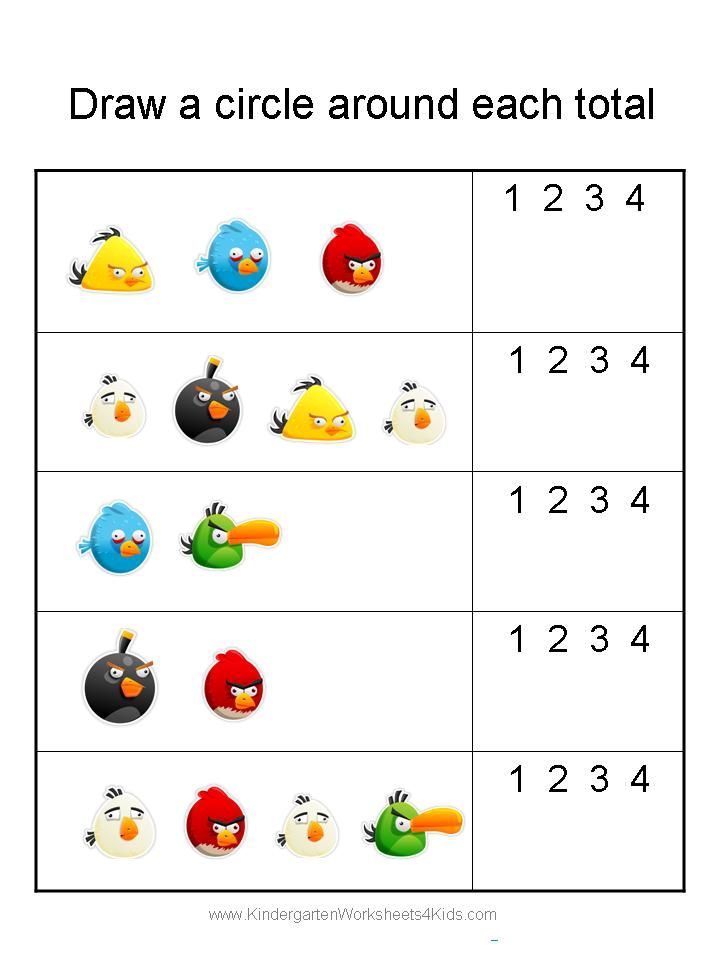
Tasks:
Educational:
- Strengthen children's ideas about the number series within 8.
- Strengthen the ability to correlate numbers with the number of objects.
- Improve the ability to count to 10 and back.
- To consolidate knowledge of geometric shapes.
- Improve the ability to solve logical problems.
- To consolidate knowledge of the composition of numbers up to 5 from two smaller ones.
- To consolidate temporary representations, the ability to navigate on a plane.
Developing:
- Develop mental processes: memory, logical thinking, voluntary attention.
Educational:
- To cultivate goodwill in children in communicating with peers and adults, the desire to help.
Course of the lesson
Ritual of the beginning of the lesson. (In a wide circle, I see, all my friends stood up ...)
A call to the teacher's phone.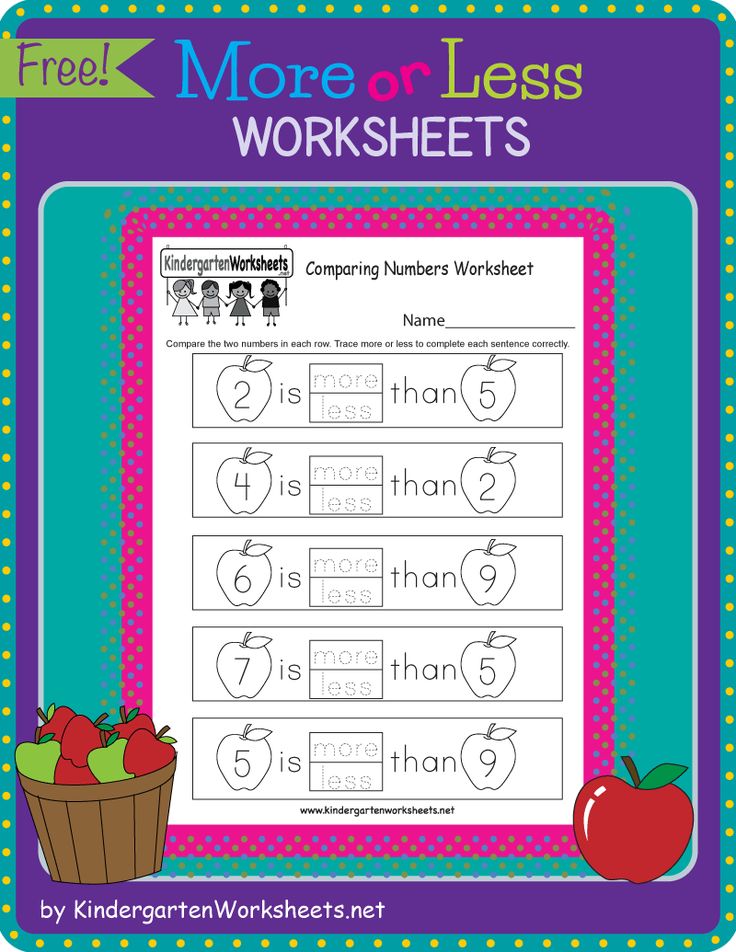
- Yes, I'm listening to you. In a trip? Of course we agree!
- Guys, imagine, we are invited to make a space trip to the planet of Mathematics!
- Who do you think can live on the planet of Mathematics?
- Yes, guys, numbers, numbers, geometric shapes, tasks, logical problems live there, and everyone there counts something, recalculates, guesses riddles, solves interesting problems. Are you willing to fly there? (Yes!) And what will we fly on? (On the rocket) Then I suggest you go to the spaceport and take your seats in the spaceship.
Operators will follow our flight in order to come to the rescue in case of emergency, but I think we will not need help, we will cope with all the tasks ourselves.
- As you know, the rocket is controlled by on-board computers. Let's first make the control panel for the spaceship.
"Don't make a mistake"
- Take a large square, attach a large circle in the middle, a rectangle in the upper right corner, an oval and a rhombus in the upper left corner, a triangle and a small circle in the lower right corner, a triangle and a small circle in the lower left corner - 2 small squares.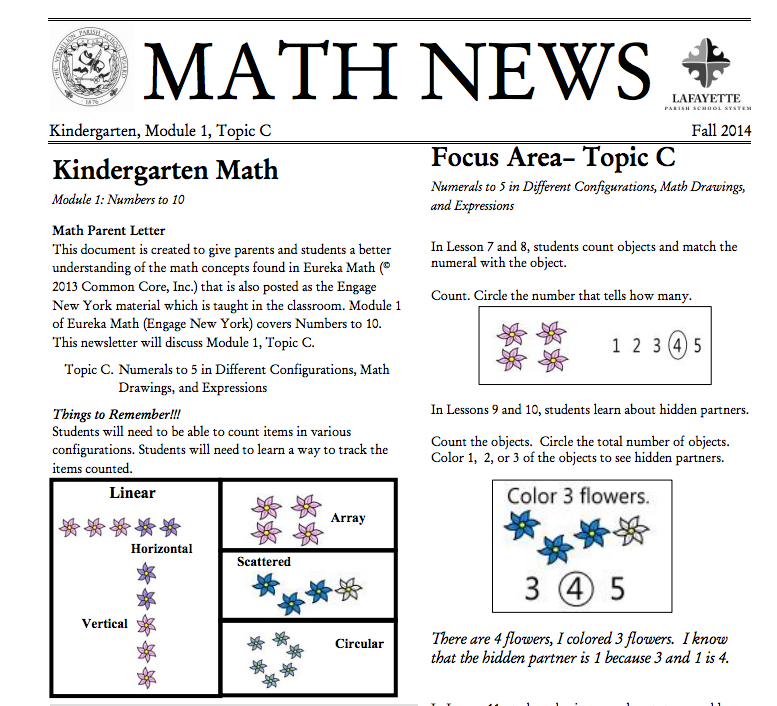
- Get ready for the start! Turn on appliances! Let's start the countdown from 1 to 10!
(rocket won't move) What's the matter? Maybe we miscalculated? Let's start the countdown from 10 to 1! Start ! (Music)
- So, the rocket is gaining altitude, the astronauts are comfortably seated in their chairs and getting ready to work on board. And you know, it is always dark in space, and astronauts need to know the days of the week, months, seasons and parts of the day well. Say,
- What day of the week is it today? What day of the week will be tomorrow? What day of the week was yesterday? How many seasons do you know? Which? Name the months of autumn, summer? What parts of the day do you know?
- Attention. Guys, in my opinion, we are already flying up to the planet of Mathematics. Let's see what awaits us here. Look, how interesting, we did not have time to arrive, and the first task is already waiting for us.
“The numbers got lost”
Offer to lay out a number series from 1 to 8. Check with your neighbors.
Check with your neighbors.
Offer to show the neighbors of the numbers that I will name.
Show a number that is greater than 4 by 1. Less than 5 by 1.
- The next task. Look at those beautiful spoons.
“Count the sounds”
The teacher knocks with spoons a different number of strokes. Children listen and raise a card with a certain number indicating the number of strokes with spoons. Complications: 1) with closed eyes; 2) pick up the number that is 1 more than I knocked; 1 less, 2 more.
The game "Be careful!"
- Look what a beautiful clearing. Let's walk along it to the music, dance, and when the music stops, you will stand as many people together as I show you the number (2, 4, 1, 3).
Match the number game
- Geometric shapes live here. For some reason, they all lie in different quantities and in such a mess! Let's count them. Take the number cards and place them next to the appropriate number of geometric shapes.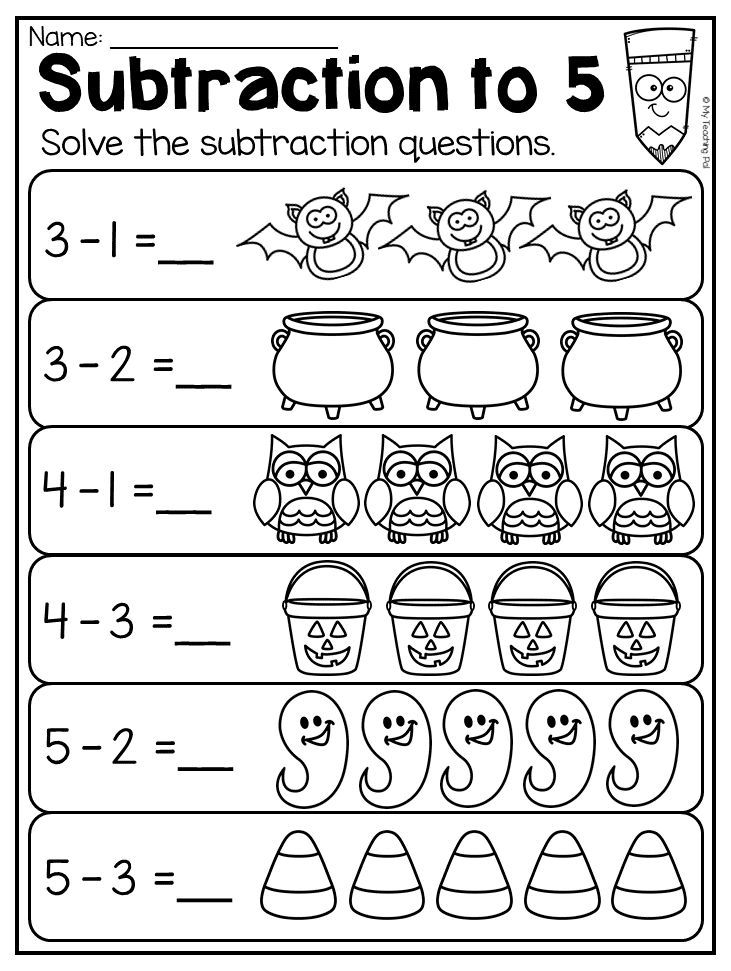
On this table I see geometric bodies (ball, cube, cone). How are they different from figures? (flat and voluminous).
Logic problems
Moving on. I see a house of logical problems. Naughty and interesting tasks live here. They will try to confuse you now, be especially careful
There were three glasses of milk on the table. Kostya drank one glass and put it on the table. How many glasses are on the table?
There were 5 apples and 2 pears on the tree. How many fruits grew on the tree?
The hedgehog asked the neighbor's hedgehog: “Where are you from, fidget?
I am stocking up for the winter, do you see the apples on me?
I collect them in the forest, took 3 of them, but I carry 2
Neighbor thought about how much it is?
Give me an answer!
A star fell from the sky,
She ran to visit the children.
3 shout after her:
“Don't forget your friends!
How many bright stars have disappeared,
Has fallen from the starry sky?
Once a friend-neighbor came running to the hare for lunch.